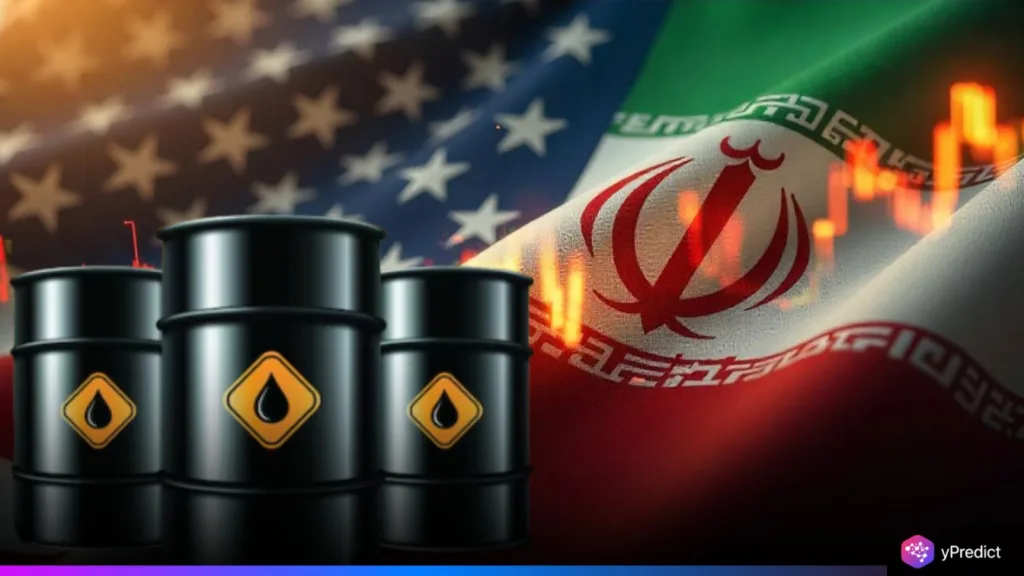
A sudden surge in oil prices following U.S. airstrikes on Iranian nuclear sites has rattled global financial markets, intensifying concerns over geopolitical instability and inflation resurgence. As crude benchmarks spike and stocks tumble worldwide, investors are reassessing risk, while central banks face renewed pressure on their monetary policy paths. With tensions escalating in the Middle East, the stakes are rising for energy security, global growth, and the timing of anticipated interest rate cuts. This report examines the economic ripple effects of this unfolding geopolitical crisis.
Global Markets React Cautiously as U.S. Strikes on Iran’s Nuclear Sites
Reuters reports that Global financial markets opened the week on edge as the fallout from U.S. airstrikes on Iran’s nuclear facilities drove sharp swings in oil prices and rippled through equities, currencies, and commodities. The strikes, which targeted three sites central to Iran’s nuclear program, raised fears of broader conflict and disruption in the world’s critical energy corridors, yet markets, so far, have avoided panic.
Crude prices jumped as much as 3% in early Asian trading on Monday, reacting to fears of supply disruptions. But as the session progressed, gains tapered as investors reconsidered the immediate risk of Iranian retaliation and its potential to impede shipping through the Strait of Hormuz.
By midday, WTI crude was up 1.4% at $74.88 a barrel, with Brent matching that gain at $78.07. According to Phillip Nova’s Priyanka Sachdeva, markets have largely priced in the geopolitical risk, and further increases would likely require clear supply damage, given OPEC+’s ample spare capacity.
Broader markets showed restrained reactions: MSCI’s Asia-Pacific index fell 1%, Chinese blue chips slipped 0.2%, and energy security concerns weighed more heavily on Europe and Japan, while the U.S. remained relatively shielded as a net exporter.
However, the market’s central concern focuses on Iran’s response, as tensions continue to fuel uncertainty in global energy markets. Some experts believe Tehran may choose restraint to safeguard vital oil exports flowing through the Strait of Hormuz. Others warn that escalation risks persist, and any aggressive move could disrupt critical shipping routes and global oil supplies.
Equities and Currency Markets Showed Resilience
Despite the tensions, equity markets showed resilience. Asian indices opened lower but trimmed losses as the day progressed. The Nikkei 225 in Tokyo slipped 0.2%, South Korea’s Kospi dropped 0.4%, and Hong Kong’s Hang Seng edged 0.1% higher, supported by strength in defense and energy shares.
In currency markets, the U.S. dollar strengthened as investors sought safety, gaining against both G-10 and Asian currencies. The greenback rose to 146.90 yen, while the euro hovered around $1.1496. Gold initially climbed but later gave up gains, dipping 0.25% to $3,358.76 per ounce, reflecting shifting risk sentiment.
U.S. futures pointed to a soft open, with Nasdaq 100, S&P 500, and Dow Jones futures slipping between 0.3% and 0.5%. In Europe, futures indicated a cautious start, with FTSE 100, DAX, and EUROSTOXX 50 contracts all signaling declines. Treasuries saw limited demand despite the geopolitical tensions, with 10-year yields edging higher.
Future Outlook as Oil Prices Surge
Analysts offered mixed views on how the situation might unfold. The central question for markets is how Iran will react. While some strategists believe Tehran may avoid major retaliation to protect its oil exports, others caution that unpredictable political dynamics could drive escalation.
Experts at JPMorgan highlighted that past regime changes in the region often led to oil price spikes of 30% or more. Commonwealth Bank’s Vivek Dhar suggested Iran might opt for selective shipping disruptions rather than a full blockade, which could still drive Brent above $100 a barrel.
Beyond geopolitics, traders are watching upcoming economic data and Fed signals, with July rate cut bets fading amid inflation concerns tied to energy costs. September remains a more likely window for policy easing.







